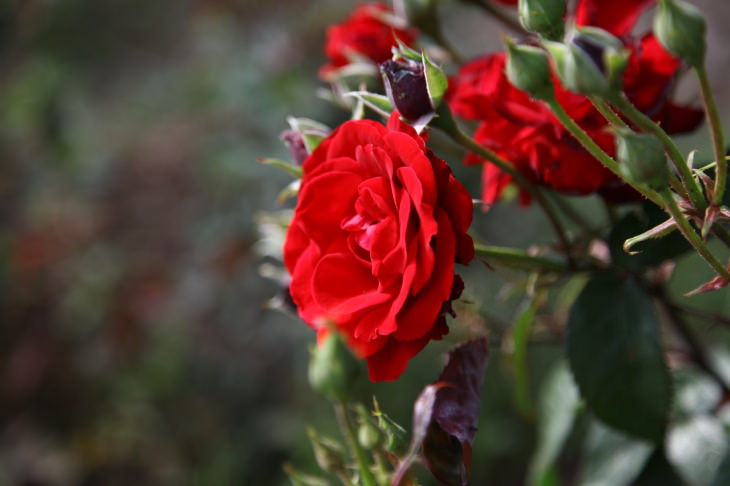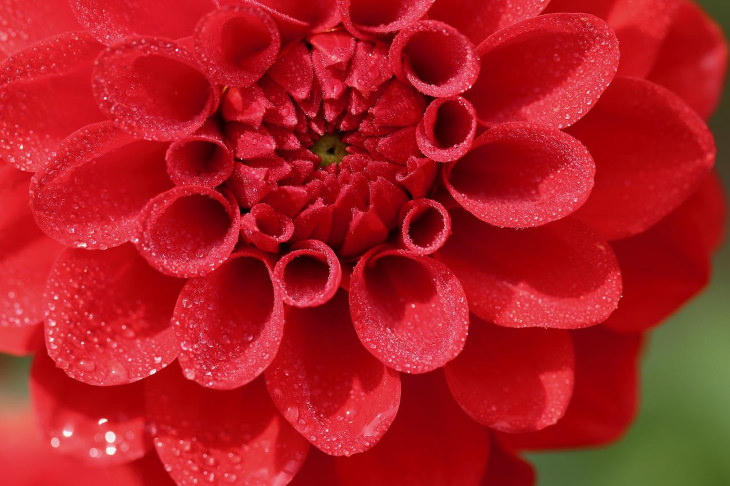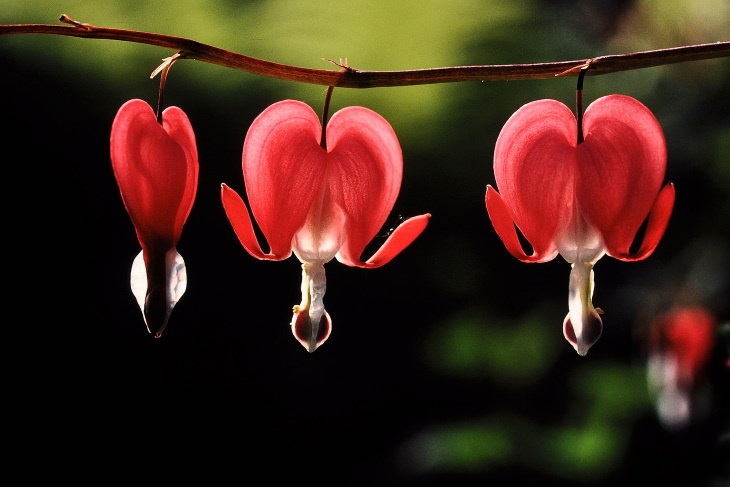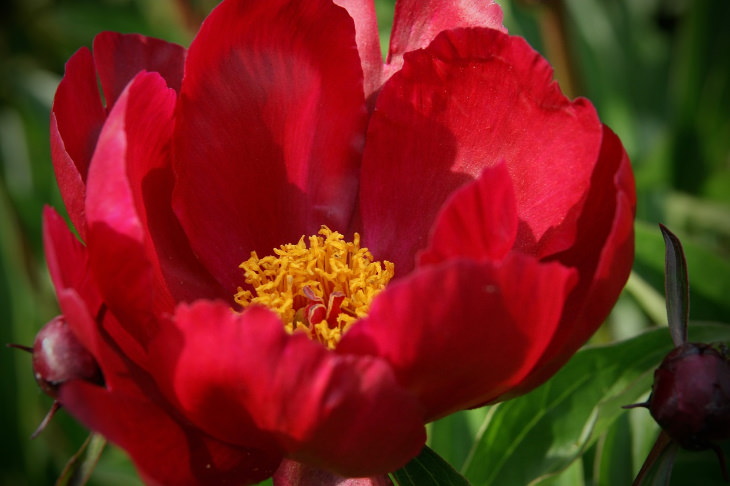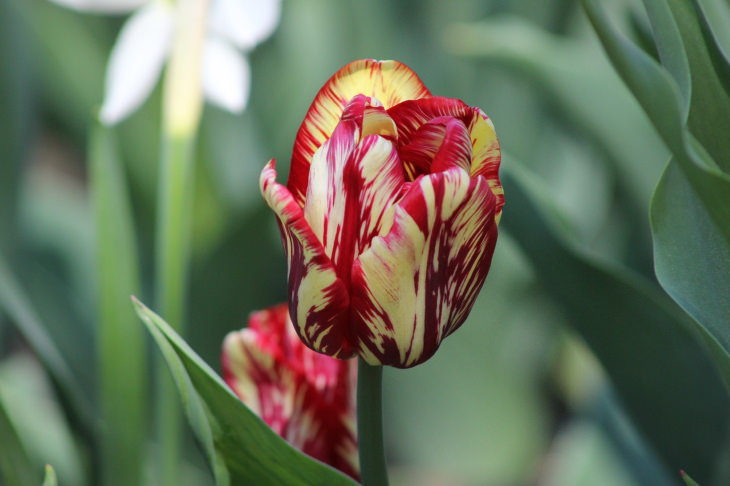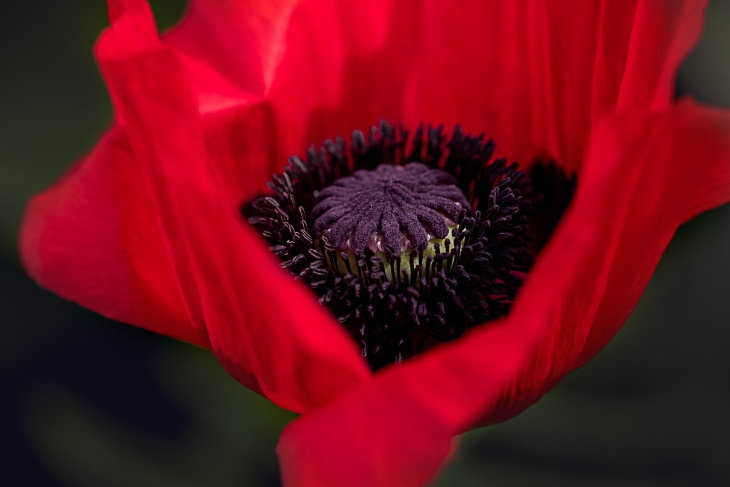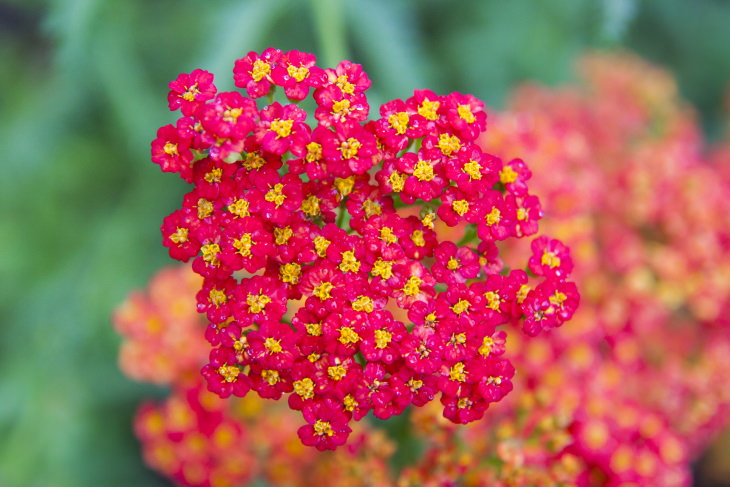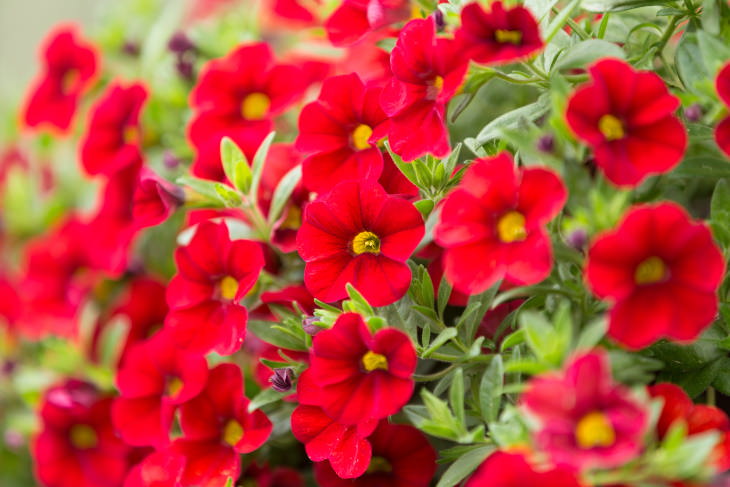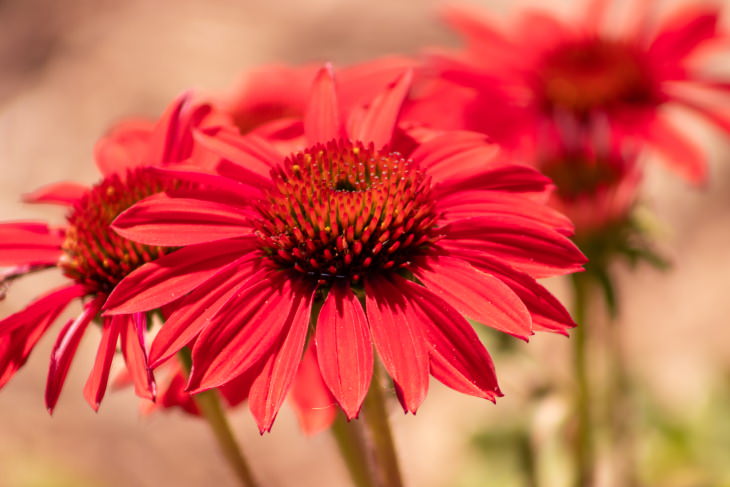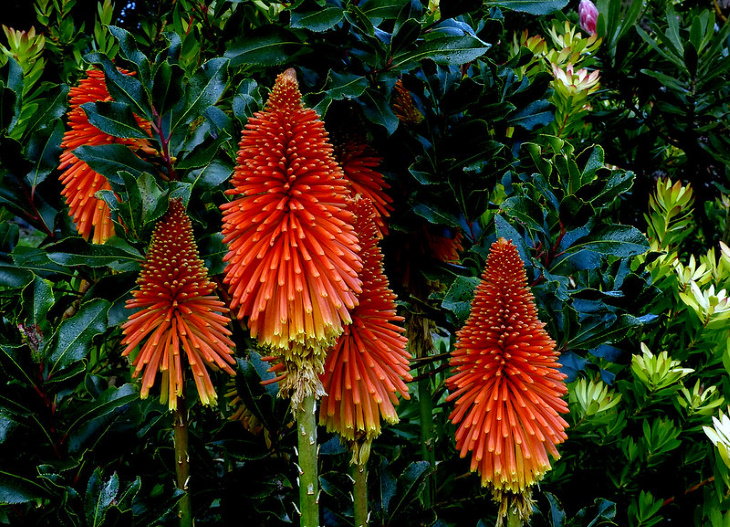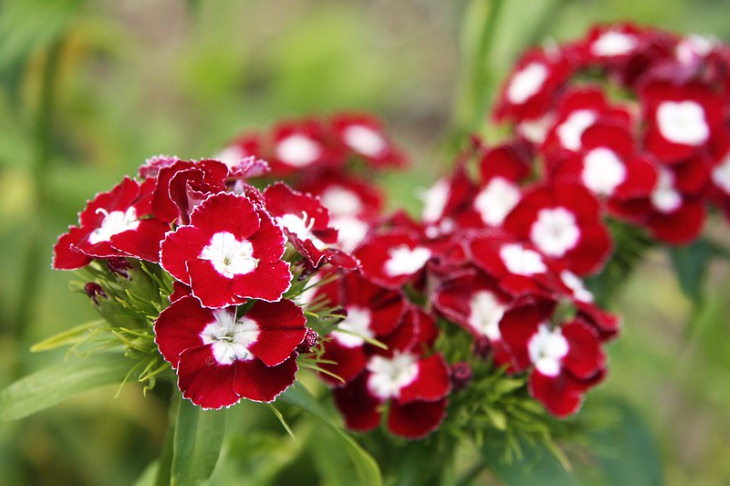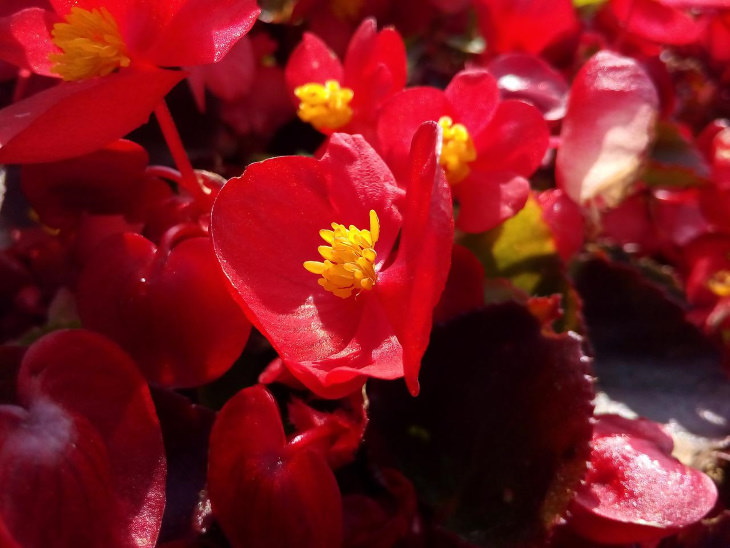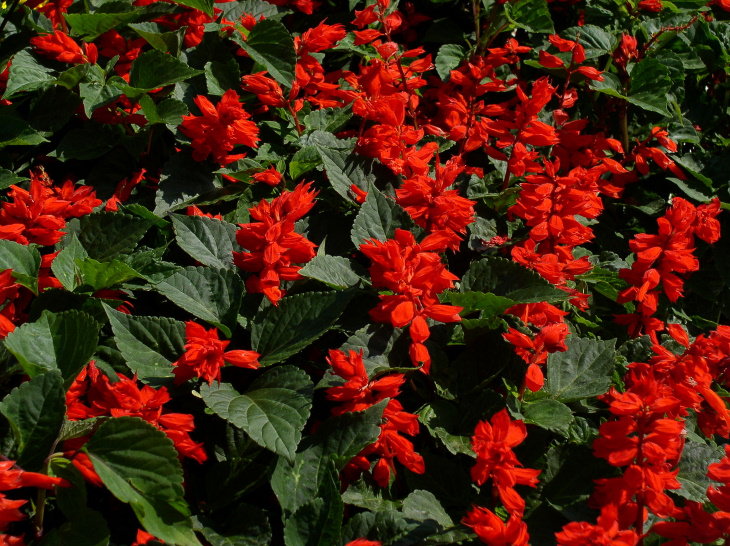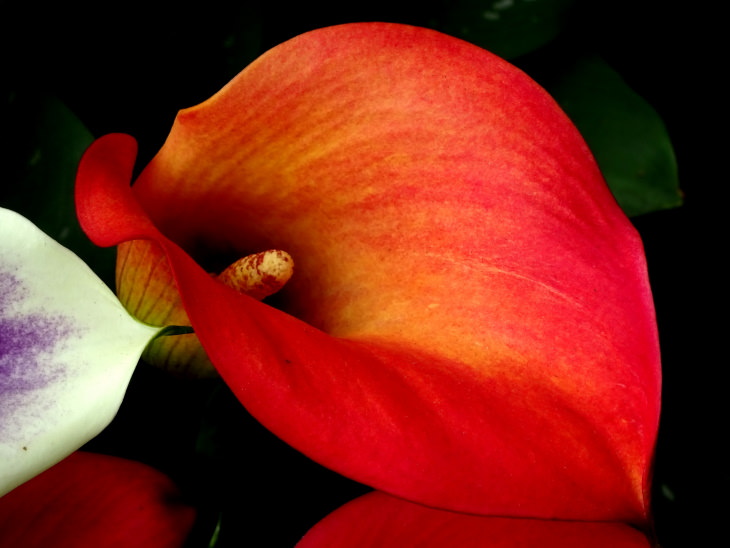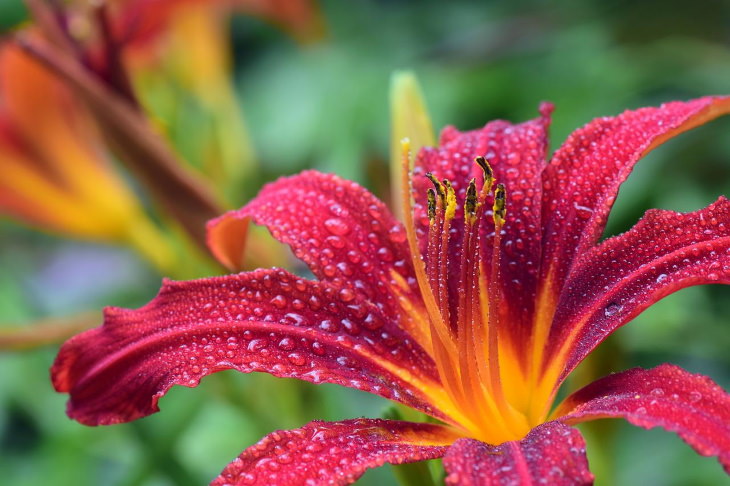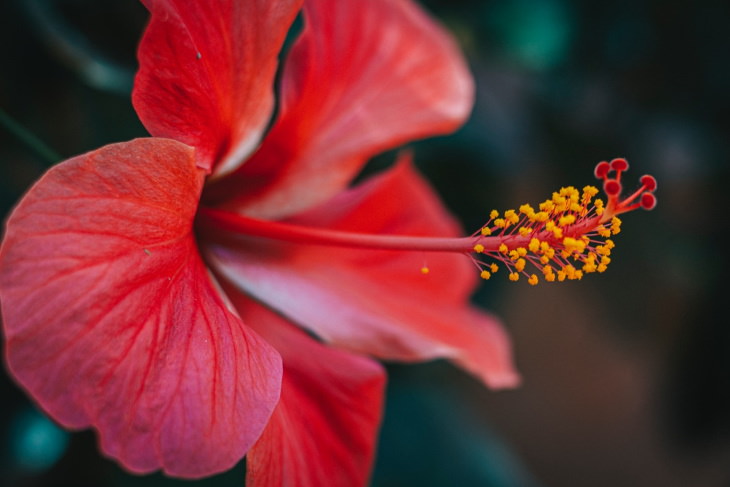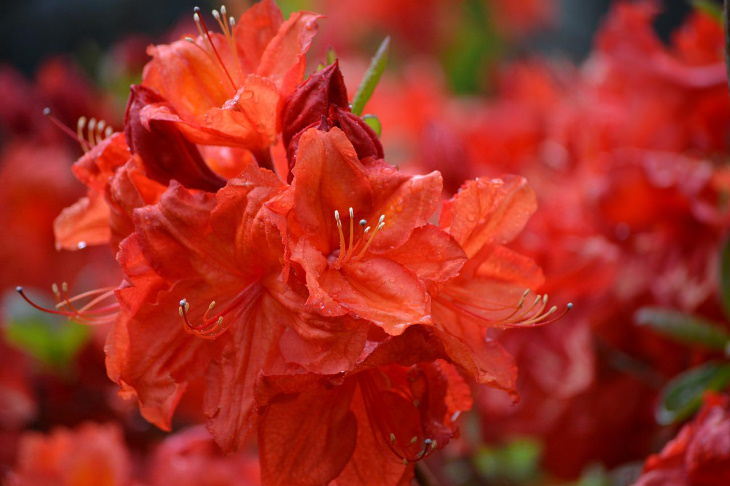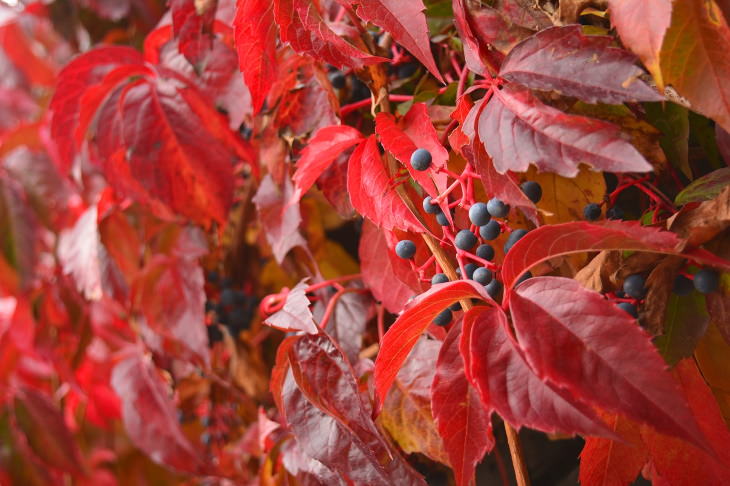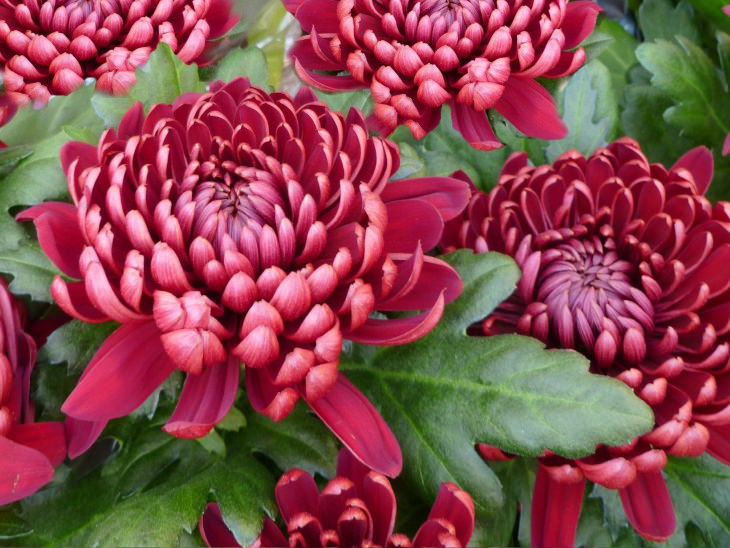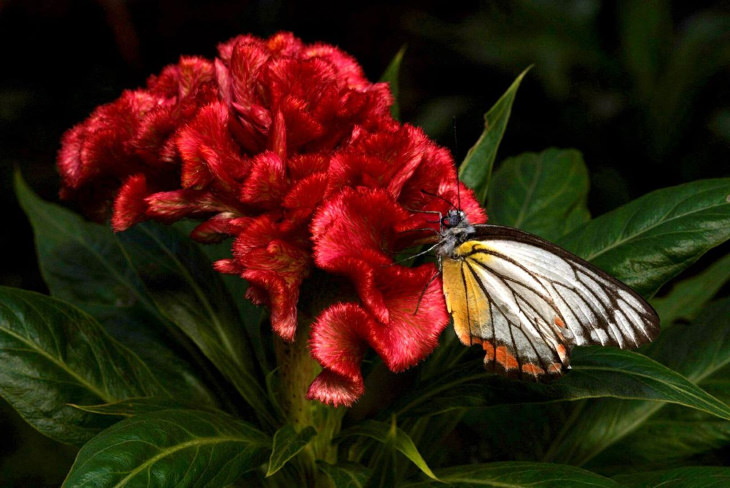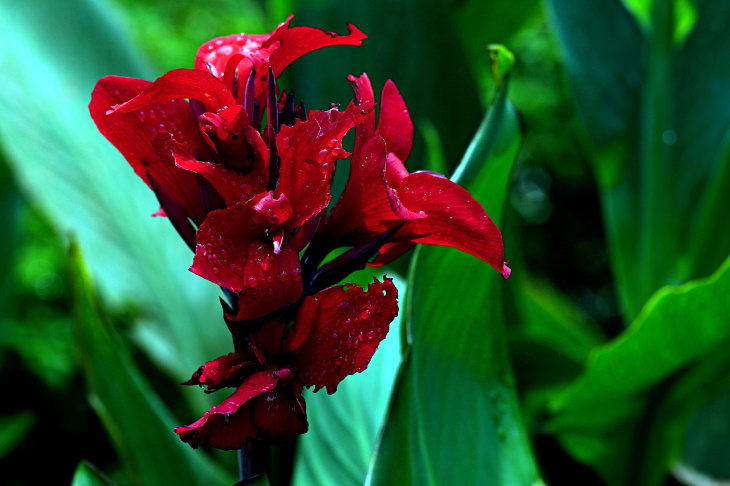Red Rose (Rosa spp.)
What list of red flowers would this be if it didn’t feature roses? A symbol of passion and love, the red rose is considered one of the most beautiful flowers in the world. And with over 2,000 existing rose cultivars, you're spoiled for choice when it comes to the perfect shade of red to complement your garden. Roses require at least 5 hours of sun and will reward you with gorgeous double blooms from early to late summer.
Dahlia (Dahlia spp.)
A cousin of chrysanthemums, daisies, and dandelions in the Asteraceae family, dahlia flowers are associated with elegance and dignity. Dahlias were admired in the Victorian age and continue to be extremely popular today. Dahlias are outstanding flowers to grow due to their astounding diversity in shape and color. Moreover, these stunning flowers are extremely easy to care for and have one of the longest blooming periods of all flowers - they start blooming in June and stay in flower until the first frost.
Bleeding Heart (Lamprocapnos spectabilis)
The elegant heart-shaped blooms of the Bleeding Heart flower typically come in two colors - pink and red. It's a perennial shade-loving plant that favors partial to full shade and belongs to the poppy family. In late spring, the plant starts to flower in long strings of up to a dozen heart-shaped flowers and stays in bloom for several weeks. After blooming, the plant tends to disappear, but don’t worry - it will be back with more dainty blooms next spring.
Related Article: 28 Flowers With Magnificent Orange Blooms
Peony (Paeonia)
Considered a symbol of romance, prosperity, and healing, peonies are beloved for their massive ruffled blooms that come in a variety of hues. Of course, the red-blooming cultivars, such as Fairy Princess, Dutchess of Kent, and Red Charm, are the most striking and dramatic. Peonies are known to be somewhat temperamental, so you’ll need to pick a nice spot with full sun to partial shade for the plant and keep the soil moist but not soggy. Providing the perfect conditions for the peony will reward you with blooms year after year.
Tulip (Tulipa spp.)
Tulips steal the show in every spring garden and come in every hue and color combination imaginable (except for true blue). Plant the tulip bulbs in fall around 4-5 inches deep in well-draining soil, and their elegant and romantic blooms will emerge between April and May.
Oriental Poppies (Papaver orientale)
Oriental poppies exist in so many colors, but the saturated orange-red is the most beloved classic. The great thing about oriental poppies is that they are perennial in areas with a cold winter. Sadly, they are not very well suited to warm climates. Plant the poppies in an area of your garden where they will get full sun. Expect blooms to appear between late spring to early summer. Like Bleeding Heart flowers, poppy plants tend to fade once their scarlet blossoms wither.
Yarrow (Achillea millefolium)
Why settle for just one bloom if you can get whole constellations of crimson flowers? Yarrows produce flat clusters of smaller flowers that come in yellow, lavender, pink, white, and red. These sun-loving, drought-tolerant plants are remarkably long bloomers too: they produce flowers for months and months from late spring to mid-fall. Cut back the flowers and use them in a flower arrangement to encourage the plant to produce more blooms.
Calibrachoa (Calibrachoa spp.)
Even though calibrachoas are annuals in most growing zones, they produce seemingly countless trumpet-shaped blooms, so planting them is definitely worth it. Provide this plant with full sun to part shade and give it a location where it can climb or drape down, such as a window box or a hanging basket. Red calibrachoas have bright pomegranate-red flowers with burgundy centers.
Coneflower (Echinacea)
“Wait, a red coneflower exists?” Thus was my reaction when I first saw these burgundy beauties. The common coneflower is purplish-pink with an orange center, but you’ll be able to find these perennial flowers in shades of red too. Red cultivars range from scarlet-orange to dark burgundy. All coneflowers are drought-tolerant plants that bloom all summer long and have some antiviral and immune-boosting properties, too.
Red Hot Poker (Kniphofia hybrid)
Also known as the torch lily, the kniphofia got its more unusual name - the red hot poker - for its tall and narrow blooms that are yellow-orange at the bottom and bright red on top. This is because kniphofia flowers change color as they mature. Kniphofias are perennial plants. They require full sun and give blooms throughout the summer.
Dianthus (Dianthus spp.)
With their silvery low-growing foliage, dianthus plants make a great perennial ground cover plant. They have small to medium blooms that come in tons of color combinations. The red varieties, in particular, can be in a solid color or have white or pink color accents. Trim the first flush of blooms in midsummer to get more flowers in the fall.
Wax Begonia (Begonia benariensis)
Begonias are known for their stunning foliage, especially when it comes to the more warm-loving varieties that people typically grow indoors. Therefore, you may be surprised to see that some begonias are grown outdoors for their blooms. Wax begonias are among such plants. Yes, they have beautiful glossy leaves, but their dainty red flowers are no less prominent. Wax begonias thrive in both sun and shade, provided that you keep the soil constantly moist.
Red Salvia (Salvia splendens)
Scarlet sage (Salvia splendens), better known plainly as red salvia, is renowned for its tolerance to drying out and adaptability to pretty much any climate imaginable. In more temperate climates, salvias are grown as annuals, and you can see them used in plenty of decorations during summer and fall holidays, such as the 4th of July or Halloween. The first blooms appear in summer and will last for two months or more.
Related Article: 11 Pretty Houseplants With Naturally Pink Leaves
Calla Lily (Zantedeschia hybrid)
The tubular flowers of the calla lily are also known as spathes. Though the white variety of this plant is more common, it also comes in a stunning crimson red. Callas are typically grown as annuals, but you can also bring them indoors and grow them as a houseplant. Callas can grow in a variety of lighting conditions and bloom for weeks and weeks throughout the summer.
Bee Balm (Monarda didyma)
Here's another hardy perennial with an interesting flower shape. Red bee balm flowers have a bright cherry red hue and bloom throughout the summer. As the name suggests, the vivid red blooms of the bee balm are a magnet for bees and other pollinators, such as butterflies and hummingbirds.
Daylily (Hemerocallis)
Despite their fragile appearance, daylilies are extremely hardy plants that produce huge trumpet-shaped flowers that sprout from a leafless stem. Although daylilies come in quite a few colors these days, probably the most striking cultivar has burgundy-red leaves and a warm-orange center.
Hardy hibiscus (Hibiscus hybrid)
Hibiscus flowers are the symbol of many tropical countries. Despite the common belief, however, these bright red flowers can also survive and bloom quite productively in a more temperate climate. In fact, sturdy varieties like the Rose Mallow Hibiscus can even overwinter outdoors, just make sure to plant it in a sunny spot and cut the bushy stems 3-4 inches before winter.
Azalea (Rhododendron spp.)
White and pink azaleas are surely nice, but nothing compares with the boldness of the red azalea. These plants are shrubs, and they come in both more compact dwarf varieties and bigger, more winter-resistant cultivars. Give the azalea medium light and moist soil, and watch the shrub turn into a curtain of red blooms from late spring to fall.
Virginia Creeper (Parthenocissus quinquefolia)
Have no space in your garden left for more flowers? No worries! If you've got a spare wall or porch column, you can plant a Virginia creeper next to it. This perennial vine will quickly take over any vertical space, covering it with beautiful glossy green leaves. In the fall, watch the leaves turn a vibrant red, complementing the fall foliage of the surrounding trees.
Chrysanthemum (Chrysanthemum spp.)
Mums are a fall staple, and they come in so many colors, shapes, and sizes too! These annual flowers are grown in full sun. Care tips: pinching is one of the most important care techniques for these flowers. Just snip off the main stem of the plant as it develops. This forces the plant to grow two side stems and will give you more flowers.
Celosia
The name of this funky-looking plant is derived from the Greek word kelos, meaning "burned." The fluffy flowers of the celosia come in many fun shapes and colors, but they all look like little flames perched on top of a tall dark-green stalk. Celosias are tropical plants, so they're mainly grown as annuals in temperate climates and require quite a bit of sun. Bloom appear all summer long, and you can harvest them and use them in flower arrangements to urge the plant to produce more blooms. Celosias also have some medicinal uses, mainly for treating diarrhea.
Canna Lily (Canna generalis)
A canna is another delicate-looking orange flower that's surprisingly sturdy and resilient. Cannas are tropical plants, so they typically need plenty of moisture and full sun. But as long as cannas are planted in a place they like, they will reward you with plenty of colorful flowers!

